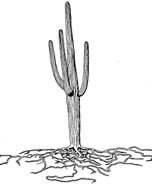 |
DIVISION
OF PLANT PATHOLOGY & MICROBIOLOGY |
|
|
||
|
Dr.
Lindy Brigham |
||
|
|
||
| Area of Interest: How do plants communicate with the other organisms? One way is with the myriad chemicals that they produce that give them both culinary interest and medicinal properties of use to humans. I am interested in understanding how plants, as organisms that cannot flee from adversity or move to more desirable environments, use these chemicals to establish beneficial relationships and deter dangerous ones in the soil around their roots. The Borage, Lithospermum erythrorhizon, produces a suite of related chemicals that have been used by many human cultures for several centuries for divers applications from a beautiful purple dye for wine and clothing to a topical antibiotic for skin lesions. The compounds are produced only in the root and the cell types in which they are produced and the ratios of the different compounds produced are regulated by the plant in response to signals we are just beginning to understand. My work involves studying the way in which the plant regulates the production of these compounds and the divers effects on the bacteria and fungi in the soil. The system has provided me with a wonderful research tool to study the interactions not only of plants and microorganisms, but also how these properties are used by human communities through time. |
||
|
|
||
| Selected Publications:
Uyeda S, Madden J, Brigham LA, Luft JA, and Washburne J 2002 Solving authentic science problems: problem-based learning connects science to the world beyond school. The Science Teacher Jan 32-37. Brigham LA, Hawes MC, and Miyasaka SC 2001 Avoidance of aluminum toxicity: role of root border cells. In Plant Nutrition: Food security and seustainabilityof agro-ecosystems through basic and applied research, eds. Horst WJ et al. 452-453. Kluwer Academic Publishers. Woo HH, Brigham LA, and Hawes MC 1999 Detection of low-abundance messages by a combination of PCR and ribonuclease protection. In Expression Genetics: Differential Display, eds. AB Pardee, M McClelland pp.401-404. Eaton Publishing. Brigham LA, Michaels PJ, Flores HE 1999 Cell-specific production and antimicrobial activity of naphthoquinones in roots of Lithospermum erythrorhizon. Plant Physiol. 119: 417-428. Brigham LA, Woo HH, Wen F., Hawes MC 1998 Meristem-specific suppression of mitosis and a global switch in gene expression in the root cap of pea (Pisum sativum L.) by endogenous signals. Plant Physiol. 118: 1223-1231. Hawes MC, Brigham LA, Wen F, Woo H-H, Zhu Y 1998 Function of root border cells in plant health: pioneers in the rhizosphere. Annu. Rev. Phytopathol. 36: 311-327. Brigham LA, Michaels PJ, Flores HE. 1997 The ability of the naphthoquinone shikonin to influence microorganisms in the rhizosphere of Lithospermum erythrorhizon. In Radical Biology: Advances and Perspectives on the Function of Plant Roots, ed. HE Flores, JP Lynch, D Eissenstat, pp. 451-453. Am. Soc. Plant Physiol. Flores HE, Brigham LA, Vivanco JM 1997 The future of radical biology? Connecting roots people, and scientists. In Radical Biology: Advances and Perspectives on the Function of Plant Roots, ed. HE Flores, JP Lynch, D Eissenstat, pp. 451-453. Am. Soc. Plant Physiol. Hawes MC, Brigham LA, Wen F, Woo H-H, Zhu Y. 1997 Root border cells: phenomenology in signal exchange. In Radical Biology: Advances and Perspectives on the Function of Plant Roots, ed. HE Flores, JP Lynch, D Eissenstat, pp. 451-453. Am. Soc. Plant Physiol. |
||
| For more information contact:
Dr. Lindy Brigham Office Phone: (520)626-8307
|
||
|
|
||
|
